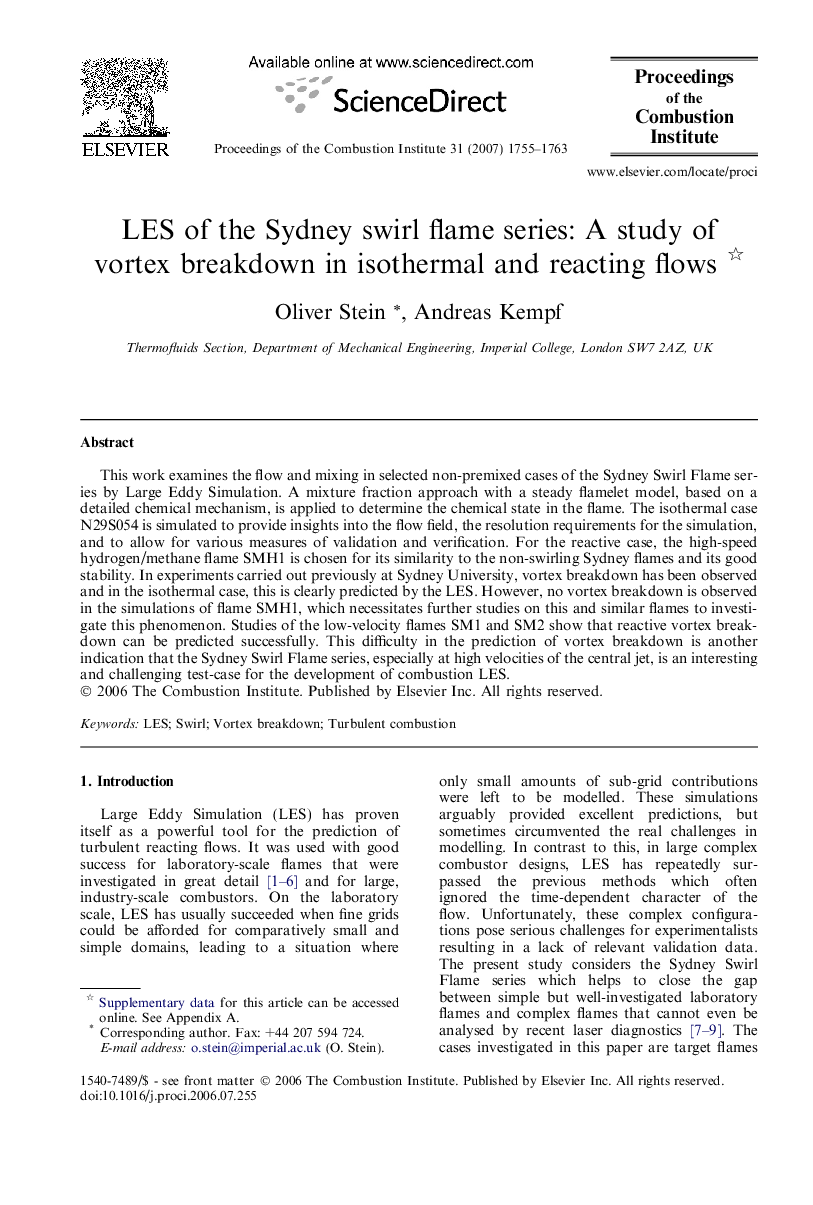| Article ID | Journal | Published Year | Pages | File Type |
|---|---|---|---|---|
| 241216 | Proceedings of the Combustion Institute | 2007 | 9 Pages |
This work examines the flow and mixing in selected non-premixed cases of the Sydney Swirl Flame series by Large Eddy Simulation. A mixture fraction approach with a steady flamelet model, based on a detailed chemical mechanism, is applied to determine the chemical state in the flame. The isothermal case N29S054 is simulated to provide insights into the flow field, the resolution requirements for the simulation, and to allow for various measures of validation and verification. For the reactive case, the high-speed hydrogen/methane flame SMH1 is chosen for its similarity to the non-swirling Sydney flames and its good stability. In experiments carried out previously at Sydney University, vortex breakdown has been observed and in the isothermal case, this is clearly predicted by the LES. However, no vortex breakdown is observed in the simulations of flame SMH1, which necessitates further studies on this and similar flames to investigate this phenomenon. Studies of the low-velocity flames SM1 and SM2 show that reactive vortex breakdown can be predicted successfully. This difficulty in the prediction of vortex breakdown is another indication that the Sydney Swirl Flame series, especially at high velocities of the central jet, is an interesting and challenging test-case for the development of combustion LES.
